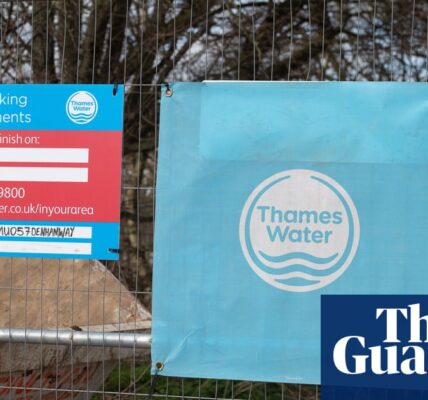They call it the Cassowary Coast for a reason. This unique, flightless native bird is such a draw on tourists to the north Queensland region, one local estimate has them each worth $1m to the local economy.
By that estimate, the community lost $10m in the first three months of this year when 10 birds were run over by vehicles.
The Bruce Highway in particular has become an impenetrable barrier, according to conservationists. So in 2019, the state government decided to build a bridge over it at Smiths Gap.
“It’s probably the world’s only bridge for a bird. There you go,” said Scott Buchanan, the executive director of the Wet Tropics Management Authority.
Near Tully, west of the main cassowary population at Mission Beach, the structure will link them up with the rest of the population inland.

Ecologists celebrated the pilot project. Many are already calling for planning to begin on more green bridges and other crossings to help stitch back together the fragmented population.
But a backlash has hit. Part of it is financial: the project went $20m over budget, is three years late and still is not yet fully open to the birds.
But many residents believe the bridge was built so badly, the cassowary will not be able to get up it.
Bridge divides opinion
Birds cannot use the bridge yet because while the structure was completed earlier this year, vegetation planting was delayed by a heavy wet season. It is expected to be undertaken this month.
The local state, MP Shane Knuth, told the ABC it was“probably the worst project I have ever encountered in the past 20 years of politics”.
The Katter’s Australian party member reflected the complaints of many residents.
Some of them pointed to photographs of an apparently steep slope up the side of the mountain as evidence its ecological benefits would be elusive.
Buchanan said the view from the highway is misleading.
The birds are able climbers and will be perfectly capable of making it up and down both sides, he said.
“What you see when you’re travelling through, it looks like a cliff but it’s not actually there. There is a clear point of egress on that point that people aren’t seeing,” he said.
“The design is probably not ideal … but we believe it will work and once we get the vegetation planted, we’ve got cameras there. And we believe those cameras will identify that cassowaries will use this area.”
The Community for Coastal and Cassowary Conservation president, Peter Rowles, has walked the slope himself.
He said it was important not to rely just on one crossing, but to invest in several, once the pilot scheme is successful.
“This was a bit of a prototype. And I think the [Department of Transport and] Main Roads will have learned a lot of things about it. Certainly a lot of other people have learned a lot of things about what you do and what you don’t do. And let’s keep on looking for alternative solutions. Or use these bridges. I mean, they’re shown to work; we know that they work well”.
The state government is also trialling technology to warn drivers that a cassowary is on the road ahead of them. But it is much better to make sure they never need to walk on it in the first place.
Rowles said he was frustrated that people could not see the benefit of linking up the “longest rainforest corridor, stretching from the beach at Mission Beach, all the way to Atherton Tablelands”.
A spokesperson for the department said the project – which also involved a new southbound overtaking lane – was completed in “early March 2024”.
“Smiths Gap is a critical corridor for cassowaries and connects Australia’s second largest area of lowland rainforest with the core upland wet tropics of the Queensland world heritage area. The wildlife overpass is intended to restore ecological connectivity for the cassowary population,” spokesperson said.
“The Department of Transport and Main Roads (TMR) has worked closely with cassowary advocates in the Cassowary recovery team to ensure that the approaches to the overpass and the bridge itself is planted with the right species to attract cassowaries.
“Based on this consultation, TMR is satisfied that multiple species of wildlife, including the southern cassowary, will be able to access and traverse the land bridge. TMR and the cassowary recovery team have identified points of access for wildlife to cross the land bridge.
“Wildlife fencing has been installed to help guide the cassowaries to the land bridge. Motion sensing cameras will be installed on the land bridge to record cassowary and other wildlife movements.
“Planting of cassowary-friendly species has commenced on the overpass, in collaboration with the cassowary recovery team.
“TMR takes cassowary conservation seriously and will continue to work with the cassowary recovery team to find innovative and effective solutions to reduce cassowary vehicle strikes.”
Rowles said it was easy for residents to complain that money spent on the environment should be spent on other public services like hospitals. But the logical endpoint was a complete ecological collapse, defeating the point.
‘Community embraces the cassowary’
Liz Gallie, the president of Mission Beach Cassowaries, said the pandemic has brought a new sort of visitor to the area.
The area’s Facebook page is bursting with tree changers looking for one, she said.
Some have fallen in love so much they have stayed for good.
“The community embraces the cassowary so much, it’s part of everyday life in Mission Beach,” she said.
“Most jobs in our area are directly related to or rely on the tourism industry.
“The Mission Beach area is known as one of the best places to see a cassowary in the wild. The most asked question at the visitor centre is, ‘where can I see a cassowary?’”.
The animals are part of everyday life. The human population of 815 is wildly outnumbered by the birds .
“And if you imagine [that] every day, all of those cassowaries in Mission Beach are just walking around the landscape,” Gallie said.
“And we’ve got to let them do that. We’ve got to give way to them. We’re the ones who can adapt. They can’t. They just got to keep walking and we’ve got to stop putting those obstacles in front of them.”
Source: theguardian.com

